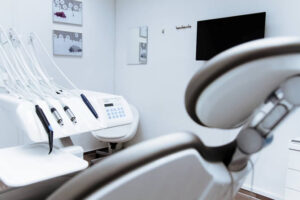 Ambulatory phlebectomy, an outpatient procedure, has been developed by dermatologists for the removal of bulging, twisted, and enlarged veins in the legs by making small incisions in the skin. Ambulatory Phlebectomy is a good treatment option for patients who want to get treated with symptomatic and asymptomatic varicose veins. This blog post covers some facts about ambulatory phlebectomy for varicose veins you should know.
Ambulatory phlebectomy, an outpatient procedure, has been developed by dermatologists for the removal of bulging, twisted, and enlarged veins in the legs by making small incisions in the skin. Ambulatory Phlebectomy is a good treatment option for patients who want to get treated with symptomatic and asymptomatic varicose veins. This blog post covers some facts about ambulatory phlebectomy for varicose veins you should know.
Ambulatory Phlebectomy for Varicose Veins: Things You Should Know
1. It Is Recommended for Bulging Veins
Ambulatory phlebectomy is an excellent treatment alternative for bulging veins near the skin’s surface. That is because, during the procedure, the vein can be entirely removed. When it happens, bulging veins symptoms instantly get resolved.
2. Fast Recovery Period
Another thing you should know about this outpatient procedure’s its fast recovery time. An ambulatory phlebectomy often requires relatively little recovery time. The same day after their treatment, patients are allowed to go home. Following the operation, some minor discomfort is normal. Patients may also have minor swelling or bruising close to the incision area. After undergoing an ambulatory phlebectomy, patients are encouraged to wear compression stockings or socks at home. In most cases, patients may resume their regular activities after 24 hours.
3. Minimally Invasive Procedure
Local anesthesia and a small incision are all required for the procedure, making it minimally invasive. Therefore, it can even be performed at the doctor’s office instead of the surgical room. Moreover, general anesthesia is not used in this procedure, and the patient doesn’t have to spend the night at the hospital. Therefore, they are allowed to go home the same day.
4. Low Risk of Complications
While ambulatory phlebectomy is minimally invasive, it’s still a surgical procedure, which means it has a certain degree of risk associated with it (like all surgical procedures). However, the chances of complications are relatively lower in the case of this procedure.
Following treatment, patients may experience problems like bruising, infection at the site, nerve injury, inflammation, or an allergic reaction to the anesthetic used. Patients who experience any of these symptoms after their treatment should consult their doctors immediately.
5. There are Other Treatments Available for Varicose Veins
Ambulatory phlebectomy is not the only treatment for varicose veins, though it is one of the best. Radiofrequency ablation therapy, laser therapy, and sclerotherapy are other treatment options available to patients. Non-invasive therapies and at-home care may effectively treat mild symptoms of varicose veins.
Examples of self-care strategies for varicose veins include proper nutrition, increased physical activity and exercise, wearing compression stockings or socks, and elevating the legs.
However, remember not all cases of viscose veins are the same. Thus they merit different treatments. Therefore, patients should consult their specialists to find the best treatment.
Final Word
You can reach out to the experts at Milner Vein & Vascular if you want further information regarding ambulatory phlebectomy. They are committed to providing exceptional healthcare services while catering to the individual requirements of each patient. Contact them here to schedule an appointment.
